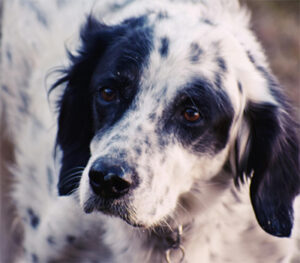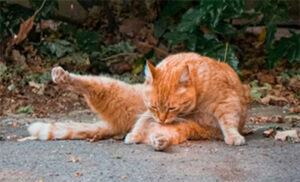Albuquerque Journal Articles
Is everybody ready for earsplitting blasts? Mick, the Nichol family Border collie will do OK; he knows his folks will be on duty. There are pure bred and mixed dogs, and plenty of cats of indeterminate parentage, who are genetically programmed for noise phobia. And because the brain is a plastic organ, meaning repetition tends to strengthen its circuits, July 4th freak-outs can worsen each year. It’s a problem that often shares canine cabezas with separation anxiety. Shelter from the aerial bombardment and light flashes will be essential. Dogs may hide, tremble, drool, cry, vomit, urinate or even pass diarrhea.…
Read MoreQuestion: A year ago I emailed you about Amber, my female cat. She had an ear mite infection and severely scratched the right side of her head. The veterinarian gave her an injection to kill the mites and steroid and antibiotic injections for the wound. The wound on her face is still a problem. Every time it heals and I remove the cone, Amber ends-up scratching it again, thusly requiring wound care and the cone. After your response in the Albuquerque Journal, the veterinarian put Amber on a special diet for sensitive stomach and food/skin allergies. The results were negative.…
Read MoreQuestion:
I know that AAFCO (Association of American Feed Control Officials) has accepted a certain kind larva as an approved ingredient in pet diets. What are your thoughts about insect-based food formulations as an alternative protein source?
Last in a series
Jerry was already getting help with his own struggles when I met him, Charlene, and their dogs Izzy and wee Rosie and Willa.
Fourth in a series
I could only help Charlene and Jerry with the fighting among their dogs if I had their buy-in. They were both feeling pretty low. So, I shared the game plan.
Third in a series
If one event quickly follows another, every time, our dogs connect the dots. Jerry’s past rage-infused tirades against Izzy, when he caught her menacing the smaller dogs, taught her to avoid them in his presence.
Second in a series Izzy, Willa, and Rosie could have been allowed to fight it out until the last dog was standing. Wouldn’t the thumping the smaller dogs endured teach them to mind their place in the pecking order? Really? Some people actually believe that. The more common mistake is to punish the perpetrator. Izzy had been severely reprimanded but not for a long time; it had been over a year since she’d been busted for bullying. Back in the day, though, Jerry had gotten really upset when seeing her push the small fry around. He’d yelled and contorted himself…
Read MoreFirst in a series Behavioral research shows that 75% of dogs are anxious in veterinary clinics. We’re ethically bound not to make it any harder for them. I quietly opened the door into reception and spied my clients. Jerry Cline was seated next to his wife Charlene. Izzy, parked between them, was a 48# spotted mix of some kind but rather a pretty girl dog. She sat evenly on both hips, head up but a little back. Her ears were also back but not pinned to the sides of her head. Her tail was tucked around her rear end, its…
Read MoreQuestion: Ben is our 2 year old indoor cat. We adopted him when he was 6 months old. We added a second cat 3 months ago. That was when Ben started overgrooming. He is now almost bald on his sides. Is he stressed? Dr. Nichol: Ben is certainly stressed. Watch him closely. His skin may occasionally ripple like a horse’s or he might suddenly lick with intensity or jump up and race out of the room. Often diagnosed with feline hyperesthesia syndrome (FHS) these kitties are frantically trying to jump out of their own skin. Indoor cats can get seriously…
Read MoreQuestion: We have a yellow Lab, “Tootsie”. She eats leaves, sticks, and other detritus including rocks, gravel, concrete chips, Hot Wheels and Legos. She minds the command to “Drop” but chews until it goes down the hatch and is seen in her droppings. She’s had diarrhea a few times. She has passed 6″ of nylon leash! Do these habits diminish over time? Dr. Nichol: Everything about Tootsie’s behavior is unhealthy. I’ve retrieved a variety of interesting objects from the GI tracts of dogs who’ve made it to my operating table. We see fewer of these cases now; the science has…
Read More









